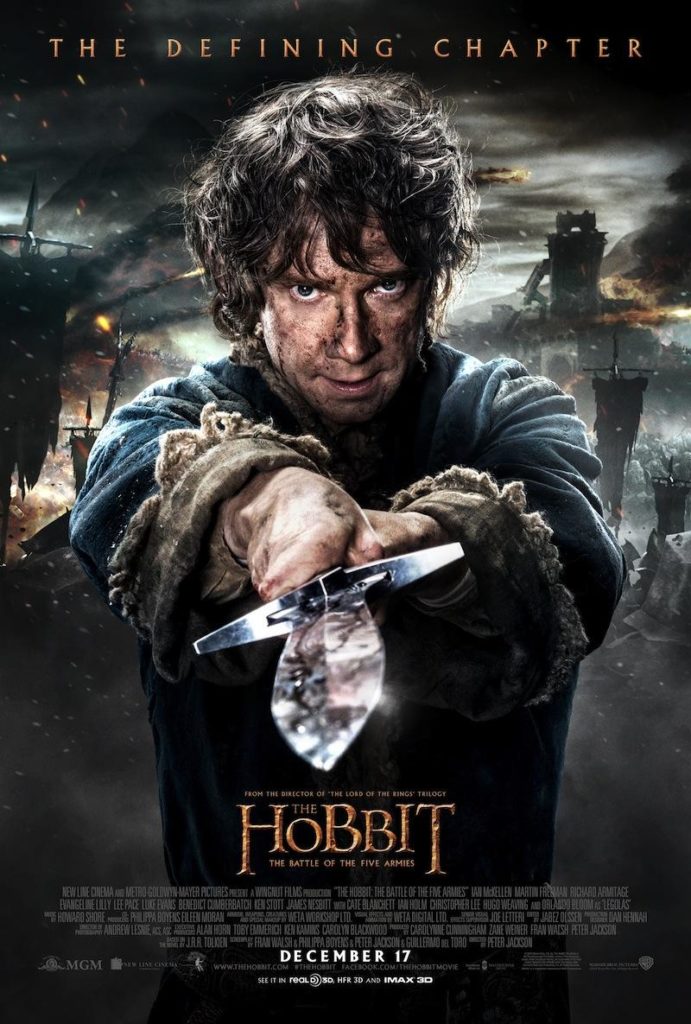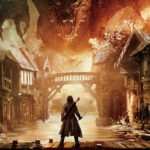Exploring ‘The Hobbit,’ Chapter 13: Not At Home
Yes, today brings the final trailer for the final installment of The Hobbit film series — the now-much-maligned (yet arguably over-padded) adaptation by The Lord of the Rings director Peter Jackson and presumably hundreds of overworked New Zealand special-effects staff.
Lately there’s been a little more hate about The Hobbit. Geeks seem to react to the thing as if there can only be one geek-master allowed at a time. As if Jackson had his day back with The Lord of the Rings, and now we’ve moved on to the age of Marvel films alone and nothing else is allowed ever. So when The Hobbit film series comes along, flaws and all, some fans react as if they won the Golden Ticket to Willy Wonka’s chocolate factory but won’t quit smacking their gum or playing their video games or whining to their parents.
Me? I’m just glad to be here.
Yes, the last film, The Hobbit: The Desolation of Smaug, had its ridiculous drug-trip-through-the-tunnel-style moments. Yes, there was no need for an over-bloated chase scene through Erebor that turned the Dwarves into new Warner Brothers cartoon characters and Smaug into a parody of himself. (Thorin’s wheelbarrow-on-molten-lava surfing and whooshing-on-chains moments stray far beyond the similar throwaway Legolas-action-hero moments from The Lord of the Rings.) And yes, Tauriel, the film-only elf maiden who actually did fine until this moment, had no need to light up like Monica from Touched By An Angel.
Rather than depart the theater giddy for the final film, I departed with the thought: Well … okay. And since then I’ve only seen the film a second time; my reaction stayed the same.
But I wrote a more-positive review of The Hobbit part 2.1 I’m still glad to be here. It’s a great time to be a fantastical story fan. To switch metaphors, why treat this solely like organized sports with all the punditry and rivalries and demands that we fire the coach?
I’m even more optimistic for the final film. And I’m still letting my The Hobbit hype happen as I await today’s trailer for The Hobbit: The Battle of the Five Armies. Maybe you feel the same. And maybe you’d like to join me for the final stage of this series, which I’ve renamed Exploring ‘The Hobbit.’
These questions were originally written for a months-long reading group for all ages at Providence Community Church in Lexington, Ky. But you don’t need a reading group to explore The Hobbit all over again. You need only your enjoyment of the story, your memory of these chapters, and perhaps a quick skim back over the material.
Let’s begin now.
Chapter 13: Not at Home
- When we last saw Smaug, he was flying south toward the Running River. But the dwarves don’t know this. Would you have preferred not knowing that Smaug has gone elsewhere, so as to increase suspicion when the party is forced down into the caves?
- In desperation they agreed, and Thorin was the first to go forward by Bilbo’s side. (page 222) Things have definitely changed between them. But are the dwarves legitimately behind Bilbo as their leader, or tagging along with him because (by contract and by chance) the hobbit has been here before? Or might there be some other reason?
- How does Tolkien not “stick” with one character, being inside his head, but instead jump from the dwarves to Bilbo and back? (Other novelists, for example, would have made it clear if the story was following Bilbo, and then, say, Thorin.) What are the advantages of this “omniscient narrator” approach? What are any disadvantages? For example, here does this emphasize Bilbo’s finding of the Arkenstone Thorin wants?
- “But I suppose I must tell the dwarves about it — some time. They did say I could pick and choose my own share; and I think I would choose this, if they took all the rest!” All the same [Bilbo] had an uncomfortable feeling that the picking and choosing had not really been meant to include this marvellous gem, and that trouble would yet come of it. (page 224) Given Thorin’s earlier longing for the Arkenstone, how does this set us up for an inevitable conflict between the characters — just when they’ve begun to work together?
- Also in light of this, what do you think about Thorin’s gift to Bilbo of the mithril jacket? What is the significance of Thorin giving anything to Bilbo, much more so dwarf-armor?
- “Come, come!” said Thorin laughing — his spirits had begun to rise again, and he rattled the precious stones in his pockets. “Don’t call my palace a nasty hole! You wait till it has been cleaned and redecorated!” (page 229) Has Thorin ever laughed before in the story, or shown a positive outlook like this? If not, why the positive change in him now?
- See ‘The Hobbit’: An Unexpected Desolation, E. Stephen Burnett at Speculative Faith, Dec. 16, 2013. ↩












































I think it’s geek fatigue, man. I’m feeling it with Marvel movies too. There’s only so much they can push it before geeks start to lose interest.
I think at this point in the story Thorin is in good humor at the success of his mission. He’s not a bad sort of person overall, considering his history, and the good side is showing as he gives gifts to his friends. The greed only comes later, and it’s interesting at how the theme of corruption runs through Tolkien’s works; items and treasures really entice and corrupt people just by their physical presence.
I hope the movie can manage to evoke the greed and regret Thorin will have, because the last part of the Hobbit is the best.